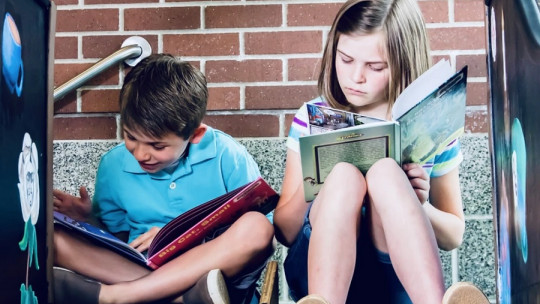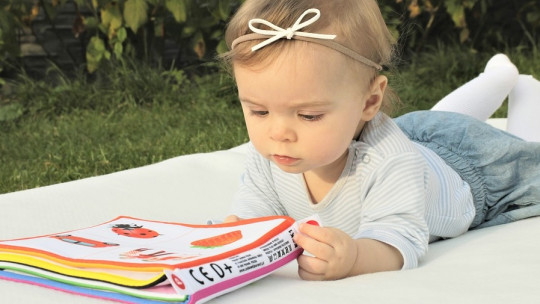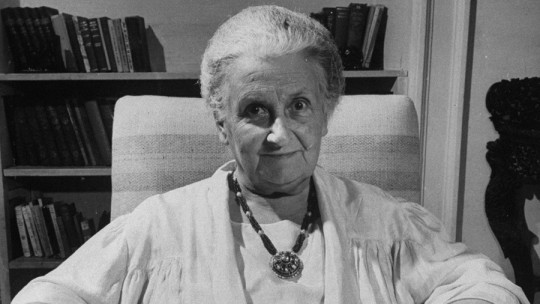
Until relatively recently, the idea that people with Down syndrome and other disorders linked to neurodevelopmental problems had was that it would be very difficult for them to acquire everyday skills such as reading and writing.
Fortunately, this idea ended up being disproved with the emergence of a Troncoso method, especially focused on this group. Let’s look at its history, main objectives and characteristics.
What is the Troncoso method?
The Troncoso method is a methodology focused on the acquisition and improvement of reading and writing skills, especially aimed at people with Down syndrome
Its main author is María Victoria Troncoso, and it places special emphasis on the potential of discrimination and visual memory skills, skills that usually stand out in people with both Down syndrome and Autism Spectrum Disorder.
History
The Troncoso method It has its origins in the 70s, originally focused on children with intellectual disabilities or with specific difficulties in learning to read. However, it would be during the 1980s that this methodology would take more shape, being applied to students with Down syndrome who had been fortunate enough to have received Early Care programs since birth.
The appearance of this method was revolutionary, since helped dispel some of the myths regarding literacy skills and Down syndrome In the era before the development of the Troncoso method, the idea was well established that people who had trisomy of chromosome 21, along with any person with an IQ less than 60 or a mental age less than 6 years, were unlikely to learn. to read and, if they succeeded, they would not have any understanding of what they read.
Based on this thought, since there had been no efforts to teach the population with Down syndrome to read and write, neither had any teaching programs been designed that were properly focused on this group. Fortunately, the Troncoso method contributed to the weakening of these ideas, since a way was found to make people with Down syndrome literate.
The current panorama is very different. It has gone from having practically the entire population with Down syndrome illiterate to nearly 80% knowing how to read more or less comprehensively
Fundamental approach
Before understanding in depth what the fundamental approach of the Troncoso method is, it is necessary to highlight what literacy is.
In essence, reading consists of accessing a written message, decoding the sounds represented in the symbols that we put on paper and understanding both the individual meaning of the words and the idea that they give off together in a sentence, without having to pronounce the words orally. words. On the other hand, writing involves expressing a message in written form, transforming ideas and concepts into something represented graphically and using a certain code.
Although both processes are closely related, writing and reading involve different actions but together they imply understanding and recreating meanings through a written code.
Understanding all this is very important when talking about people who have Down syndrome. These people have physical, psychological, evolutionary characteristics and learning rates that are different from those presented by people without intellectual disabilities. This is essential to take into account when teaching reading and writing, given that we will not start from the same point as we do with students without the syndrome.
Troncoso discovered that a fundamental aspect in the acquisition of reading and writing skills in boys and girls with the syndrome was having received Early Care. In fact, based on this proposed the idea that these children could be taught to read and write before they reached school age and, thus, help them integrate into school more easily.
Goals
The objectives of the method focus on ensuring that students, specifically those who suffer from Down syndrome, can acquire reading and writing skills good enough to be able to have an independent life, being able to manage in a functional and practical way with their social environment and cultural.
The objectives set out below follow this same order, going from the most basic to more socially extrapolated levels
Reading
The main objectives of the method focused on reading competence are, from lower complexity to higher complexity:
Writing
Regarding the objectives to achieve during the development of reading skills we have the following, ordered from least to most complex:
As surprising as the final goals to be achieved in reading and writing may seem, the truth is that a significant percentage of the current population with Down syndrome has achieved them.
Yes ok They can also be extrapolated to the rest of children without intellectual disabilities the fact that the method has been shown to be effective for a group that until recently was considered non-literate is very notable.
Characteristics and application of the method
During the application of the method, the priority and fundamental thing is that the student understands what he reads, that he acquires fluency and is motivated both during initiation and learning and progress in the short, medium and long term. As long ensure that the individual gains fluency without losing motivation the program is carried out taking into account the needs of each person, the Troncoso method being applied individually and personally.
The educator in question, whether teacher or family member, works with a single student in each session, adapting the activities depending on how he or she sees the literacy process developing and providing the child with the materials that are necessary. The teacher chooses the objectives, selects the materials and executes the activities systematically and structured although, depending on how appropriate it is, it may allow some flexibility.
The Troncoso method, since it has been specially developed for people with intellectual disabilities, takes into account the need for each new learning to be consolidated. To achieve this objective, the learning is repeated as many times as necessary so that the student has it so well established that it can be transferred and generalized to other contexts beyond the classroom. This means that the method ensures that the child achieves reading and writing outside of the session.
Although it is not a disadvantage that the child has not yet begun to speak, it is appropriate who is familiar with the idea that people, animals, things, and actions have names To verify that this is the case, you can say the name of something (e.g., “ball”) and, even if you do not repeat it, if you locate it and evoke it, it will be understood that you relate that word to the object in question.
This is a fundamental aspect, since the method consists of presenting a written word to the child and reading it several times during several sessions, also indicating what it refers to. The child, based on having been exposed to that visual information over and over again, will relate those symbols to an object, action or person and, consequently, “read” the word from memory once he or she sees it. It is important that the written word is presented in something physical, such as a wooden token or cardboard, accompanied by a drawing of what it represents.
In short, the method can be described by overcoming the following stages:
1. Association
The child will learn to discriminate and match objects or drawings that are the same This is done following the following progression:
Object-object Object-image Image-image Image with the word-image with the word Word-word
2. Selection
The child selects among several objects that meet the characteristics indicated.
3. Classification
The child establishes different categories for having a certain common quality such as they can be the same semantic field, the same utility, relationship of place, size, origin…
4. Expression
The child expressively describes an object, highlighting its properties and qualities or something that attracts attention.
5. Generalization
The child exports what he has learned to different areas of life and situations with varied characteristics.
The advantage of teaching reading by this method, both with children with intellectual disabilities and those who do not have it, is that the information is presented in more than one way, facilitating learning. On the one hand, there is the fact that The information is received visually (word together with the image it represents) and auditorily (the teacher reads the word). On the other hand, the fact that the word is written means that it remains longer in the individual’s consciousness, making it easier to leave it fixed in memory.
The words that are proposed for the student to read are those that he knows in his real life, such as “dad”, “mom”, “ball”, “walk”… Once he has associated the written word with its graphic representation, The student will be able to form simple sentences using the cards on which they are written. In some cases the child is able to “read” orally what he puts on those cards although, in the case of Down syndrome, it is foreseeable that there will be some articulation problems.
One of the characteristics that may be surprising about the method, one may even think that it is counterintuitive, is the fact that it begins with the student learning to read the word in its global sense and, later, knowing how to break the word into syllables. . That is, it does not read each letter of the word to form the word as a whole (e.g., casa = /ka-sa/ or /kasa/) but, upon seeing the word, it immediately relates it to its concept. So fluency is prioritized over phonological awareness
The daily time dedicated to teaching reading and writing is not very long, usually between 5 and 10 minutes a day is enough, which can be easily incorporated into early care sessions. Little by little, the time is increased, emphasizing phonological awareness with the intention that, in the future, they will be able to read words they have never seen.








